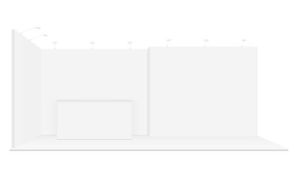
Registration Open
Morning Breakfasts In Networking Exhibition Area
Continental Breakfast

Chair’s Opening Remarks
Revolutionizing Electric Mobility: Integrating Power, Efficiency, And Affordability In Whole Vehicle Design
Bob Galyen, rt. CTO CATL, Chairman Emeritus of NaatBaTT
-
System integration optimization issues at a whole vehicle level
-
What are the emerging design philosophies for different classes of B.E.V.?
-
How does this impact the design philosophy for the overall vehicle, including battery pack integration and thermal optimization?
-
How do you incorporate cost optimization into your whole vehicle design concept to reduce the price of the vehicle?
-
Battery pack integration/attachment, thermal optimization and multi-function component integration

Advancing Thermal Management: Unraveling Complexities Beyond Battery Boundaries
Cecile Pera PhD. Battery Electric Vehicle Expert, OROVEL
-
Explore the intricate realm beyond conventional Battery Thermal Management constraints
-
Delve into the paramount role of safety as a primary driver, coupled with a comprehensive understanding of OEM concerns and requirements.
-
Unravel the nuanced constraints behind Thermal Management, providing an in-depth review of diverse options available in the field.
-
Examine the far-reaching consequences of Thermal Management Technologies on various facets of Battery and Electric Vehicle functionalities.
-
Gain insights into the intricate interplay between thermal management strategies and their impact on overall electric vehicle performance.
-
An advanced exploration into the technical intricacies shaping the future of electric mobility.

Maximizing Efficiency & Unlocking Battery System Performance Whilst Driving Down Cost Of Battery Pack Production
Stuart Selwood, Global Key Account Manager and Business Development Manager EMEA – E-Mobility, SIKA
-
Unlocking performance in your battery thermal management system utilizing state of the art gap fillers and thermally conductive adhesives
-
Enabling maximum performance whilst maintaining efficient manufacturing processes to drive down the costs of battery pack production
-
Reduce weight and improve efficiency utilizing the latest materials to market in order to meet the demands of the latest adoptions in the BEV landscape
-
Design by nature: Using nature to influence design in battery thermal management?
-
Materials: Finding the sweet-spot for thermal conductivity
-
Sustainability: How solutions can enable repair, reuse and recycling

Breaking The Trade-Off Between Product Quality And Development Time Using 3D Deep-Learning Algorithms: Heat Exchanger Optimization
Kosmas Kritikos, MBA, Commercial Director DACH, Neural Concept
-
Understand how predictive models based on 3D Deep Learning algorithms accurately forecast numerical simulation results in near real-time directly from 3D CAD geometry
-
Explore the capabilities of Deep Generative models in swiftly generating innovative design variations
-
Learn about fully automated optimization campaigns that efficiently optimize geometries, leveraging predictive and generative capabilities
-
Discover a powerful and open platform enabling OEMs to seamlessly integrate deep learning technology into existing workflows and effectively use it in production
-
Gain insights into recent algorithms based on Geometric Deep Learning, which enable shortcutting simulation chains through predictive models outputting post-processed simulation results and optimization suggestions directly from CAD designs
-
Implement predictive and generative models to streamline heat exchanger optimization processes, leading to significant performance enhancements
-
Understand how AI models can emulate the expertise of simulation engineers, empowering product or design engineers to make informed decisions early in the development process
-
Uncover the complexities of heat exchanger design and the advantages of utilizing AI-driven internal CFD simulations for non-parametric optimization

Connectors And Joining Solutions For Next-Gen EV Design: Challenges And Innovations
Dr.-Ing. Fatih Bülbül, Head of Business Development Europe, EJOT
The evolution of fasteners for electrical contact in battery joints is essential for enhancing performance, ensuring safety, extending battery life, optimizing energy efficiency, and keeping up with the rapid technological advancements.
-
Explore strategies for optimizing electrical contact performance in battery technology through advanced fastener technologies
-
Implement advanced fastener technologies to enhance electrical contact performance in battery applications, ensuring reliability and safety
-
Address safety challenges associated with thermal and dynamic loads in battery joints through technical precision parts and innovative fastening concepts
-
Extend battery lifespan by utilizing evolved fasteners designed for durability and performance
-
Improve energy efficiency in battery systems through practical and innovative fastener design strategies
-
Understand the importance of integrated spring features in screw heads for enhancing clamp load retention under dynamic and thermal loads, ensuring permanent electrical contact in joints
-
Learn about the application of Finite Element Method for numerically calculating clamp load retention under various operating conditions, facilitating optimal design and performance
-
Incorporate insulated screws into designs to achieve high-functional, low-impedance screw connections, ensuring permanent electrical contact even in environments with high vibrations

Decoding Thermal Runaway: Interplay Of Testing And Modelling
Jonna Hynynen, Research Scientist, RISE
In battery system design, the effects of different cell test conditions must be understood. This is of utmost importance for the safety assessment and validation of computer models.
This session will discuss the impact of cell test conditions, such as test atmosphere, thermal runaway triggering methods and state-of-charge. It will also deal with how to use the data for cost-efficient thermal propagation modelling.
-
Understanding various cell test conditions
-
The significance of a systematic approach
-
The importance of accurate data for the validation of models
-
A cost-efficient simulation model for thermal propagation
-
Why safety-critical testing is necessary to support modelling

Morning Networking Break
Exhibition Hall > Tea, Coffee, Soft Drinks
Network Break Sponsors



Enhancing Converter Power Density And Flexibility With High Power Density Modular Power Conversion Devices
Greg Green, Director of Automotive Marketing, Vicor Corporation
-
Opportunities to reduce vehicle weight go beyond battery system improvements and involve system integration with the power distribution network for total vehicle system improvements
-
Using the highest power density technology for DCDC conversion allows DCDC converters to be downsized and incorporated into the battery case, for weight and package improvements
-
Recognize the impact of reducing the weight of the thermal management system for the battery and power distribution system on improving consumer attractiveness towards BEVs
-
Explore opportunities for reducing vehicle weight beyond battery system enhancements, including system integration with the power distribution network for overall vehicle system improvements
-
Discover the benefits of utilizing high-power density technology for DCDC conversion to downsize DCDC converters and integrate them into the battery case, leading to weight and package improvements
-
Learn how this technology facilitates the implementation of the 48V zonal architecture, resulting in reduced thermal load for the battery cooling system and driving cost and weight savings at the vehicle level

Battery Cooling: Harnessing Laser Welding For Stronger, Lighter, Sustainable Aluminum Cooling Plates
Adrian Serna, Business Development Specialist, AdvanTech International
-
Explore the advantages of laser welding, including enhanced strength, reduced weight, and cost savings, achieved through the utilization of robust yet affordable materials
-
Examine the environmental advantages of ground breaking laser welding technology, particularly in terms of reducing the CO2 footprint, and its contribution to sustainability efforts
-
Gain insight into the practical applications of laser-welded aluminum cooling plates across various industries, understanding their potential market impact and benefits
-
Analyze the trajectory of laser welding technology, forecasting its potential to reshape the landscape of battery cooling solutions and its broader implications for industrial applications

How To Unlock Greater Efficiency And Performance In Your Battery Thermal Management System
Thomas Brendler, Leader New Energy Business Development, NORMA Group
-
Identifying Inefficiencies in Traditional Thermal Management Development: Analyze the shortcomings of traditional approaches to thermal management development, pinpointing areas for improvement and optimization
-
Exploring Simulation Methods for Thermal Management Optimization: Investigate advanced simulation methods as a game-changing approach to thermal management, understanding their role in predicting and optimizing system performance
-
Optimizing Component Selection for Higher Performance: Learn techniques for selecting components that minimize pressure drop, maximizing system efficiency and performance
-
Cost-Effective Material Selection for Thermal Management: Explore strategies for identifying cost-effective, lightweight materials suitable for thermal management applications, balancing performance and cost considerations
-
Integration of Smart Systems for Enhanced Efficiency: Understand the benefits of function integration, Poka-Yoke components, and advanced assembly techniques like laser welding in elevating system performance, efficiency, and reliability

Thermal Management Strategies For Faster Charging, Extended Range, And Propagation Prevention
Bret A. Trimmer, Applications Engineering Manager –NeoGraf Solutions
-
Explore the challenges and opportunities as we delve into cutting-edge technologies, strategies, and best practices to optimize thermal performance in EVs
-
Review the latest goals and best current methods for EV, ePlane, eVTOL, and Maritime battery thermal management
-
Examine the five factors that allow cells to charge quickly and discuss the single factor that pack designers can control
-
Unravel the secrets to maximizing driving range through innovative thermal management materials
-
Explore the four primary strategies battery pack manufacturers use to prevent Thermal Runaway and the impact of each on fast charging, cell performance, and cell lifetime
-
For applications where smaller-pack-size and lighter weights are essential, flexible graphite will be discussed as a direct substitute for aluminum

Thermal Innovations For EV Battery Safety: Unveiling Next-Gen Solutions
Dr.-Ing Matthias Wissling, VP R&D, Electrification & Engineered Components, Stanley Black & Decker, Inc.
Behnam M. Gholamali, Development Engineer, Stanley Black & Decker, Inc.
-
Addressing Critical Challenges in Li-Ion Batteries: Safety, performance, lifetime, costs, and sustainability, and explore how effective thermal management can mitigate these challenges
-
Understanding the Effects of Charging and Discharging Cycles: Learn about the volumetric changes, swelling, and contraction experienced by batteries, especially in prismatic cells, during charging and discharging cycles, and their implications for battery performance and safety
-
Exploring Novel Approaches in Thermal Management: Discover innovative approaches such as integrating thermal barriers with swelling compensators to address thermal propagation risks and battery cell swelling, and understand the effectiveness of these solutions through experimental investigation and numerical simulations
-
Optimizing Thermal Management Solutions: Gain insights into optimizing the use of swelling compensators and thermal barriers to effectively mitigate thermal propagation risks, leading to improved safety, performance, and longevity of EV batteries
-
Advancing Thermal and Pressure Management Strategies: Explore advanced thermal and pressure management strategies in battery packs, to enhance the safety, reliability, and efficiency of EV batteries

Integration And Simplification Towards Cell-Pack Design
Oliver Quirin, Business and Industry Manager Mobility – Battery Pack, TRUMPF
Integration and simplification towards cell-pack design leads to cooling plates being an integral part of the battery pack. Both trends lead to the need of larger cooling plates that challenge the current CAB brazing production technologies.
-
Explore how laser beam shaping serves as an enabling technology in the context of leak-tight aluminum cooling plate welding
-
Investigate how laser-welded cooling plates contribute to meeting specific customer requests, particularly in terms of cyclic loads, burst pressure, and corrosion resistance
-
Discuss sustainability and cost benefits as laser welding reduces energy consumption, production footprint and material costs. Monomaterials allows the usage of recycled alloys and supports single-type separation
-
See who is already using the leak-tight laser welding technology for their series productions. Get a short overview which industry proven solutions are in use

Networking Lunch Break
Soup, Salad, Mains, Sides, Dessert
Tea, Coffee, Juices, Soft Drinks


Advances In Multiphysics Battery Modeling And Simulation
Alberto Romero, Simulation Engineer, KREISEL Electric GmbH
In the quest for high-performance, durable, and safe batteries, understanding the intricate world of battery technology and its underlying physical processes is paramount. The integration of multiphysics modeling software has emerged as a game-changer, enabling precise simulations of batteries, empowering engineers to design with unprecedented accuracy and innovation.
-
Learn how to develop cell-level and pack-level models, tailor-made for various battery chemistries, providing a holistic view of battery behavior
-
Gain insights into simulating a plethora of aging mechanisms, allowing for in-depth degradation studies that pave the way for enhanced battery lifespans
-
Explore the ability to predict and analyze battery performance under diverse load cycles, including real-world drive cycles and hybrid pulse power characterization (HPPC), among others
-
Delve into the critical realm of thermal management and thermal safety, ensuring your batteries operate optimally while maintaining safety standards
-
Understand how to perform parameter estimation, a crucial step in characterizing battery cells and designing Battery Management Systems (BMS) with the utmost precision

Thermal Management Solutions: From The ICE Age To BEV Age
Amin Eltaif, Innovation Manager, HENN GmbH & Co KG
Manuel Lutz, Vice President, HENN GmbH & Co KG
In the transformative shift from ICE Age to BEV Age, pioneering advancements in thermal management and connectivity stand as crucial pillars for progress. In this evolving landscape, solutions must not only address the immediate challenges but also anticipate the demands of a sustainable future, emphasizing adaptability, reliability, and efficiency.
-
Minimized installation space meets minimized effort for secure, maintenance-free connections
-
Modular design saves space and grants more freedom: This offers significantly more options in how things are designed
-
Solutions are designed to meet changing needs, making it easier to adjust and vary designs for fulfilling every customer’s requirement
-
Offering both, this is a highly reliable locking mechanism for superior sealing capability under all conditions, while keeping up the lowest insertion force
-
Find the best way for thermal management efficiency through our optimized design for maximum effectiveness
-
Merging union crimping expertise with plastic design techniques to elevate product performance and efficacy to new heights

Adhesive Bonded Cooling Plates: Revolutionizing Battery Thermal Management
Jorge Curras Guede, Pre Development Engineer, MAHLE
-
Understand the innovative adhesive-bonded cooling plate technology and its significance in revolutionizing battery thermal management
-
Transformative Benefits of Adhesive-Bonded Solutions: Explore the mechanical strength, internal cleanliness, weight reduction, and reduced CO2 footprint offered by adhesive-bonded cooling plates, and their impact on battery performance and sustainability
-
Market Insights and Forecasted Trends: Analyze forecasted market share distribution among battery cooling plate designs from present to 2030, gaining insights into evolving industry trends and the potential adoption of adhesive-bonded solutions
-
Expertise Showcase in Optimal Thermal Management: Gain an understanding of the specialized expertise and capabilities in achieving optimal thermal management within battery systems, emphasizing the role of adhesive-bonding technology in enhancing performance and efficiency

Driving Sustainability Through Circular Economy: Navigating Decarbonization In Next-Gen BEV Design
Valtteri Väisänen, Senior Consultant, S&P Global
-
Understanding Regulatory Catalysts for Sustainability: Explore how regulatory requirements such as the ELV directive, CBAM, and battery mandates are driving sustainability and business growth in the automotive sector, intertwining environmental responsibility with economic viability
-
Demystifying Circular Economy Principles: Gain clarity on circular economy principles and their transformative potential in achieving decarbonization goals within the automotive industry, focusing on resource efficiency, recycling, and responsible production
-
Navigating Challenges in Achieving Net-Zero Emissions: Identify challenges inherent in the automotive industry’s long and complex value chains, and understand the nuanced approach required to navigate towards Net-Zero emissions while ensuring resilience and sustainability
-
Drivers of Circular Economy Adoption: Examine the driving forces such as consumer demand, regulatory pressures, and internal sustainability goals propelling the automotive industry towards circular economy practices

Processing Of Foams For Thermal Propagation Protection: Fundamental Principles And Concepts For Automotive Applications
Jan Mies, European Adhesive Engineer / Senior Expert, Technology Center Dispensing & Plasma, bdtronic GmbH
-
Explore the fundamental principles underlying the generation of foams for thermal propagation protection in battery modules, including the key mechanisms involved in foam formation and their significance in preventing thermal runaway
-
Analyze various concepts and techniques for processing foams in battery applications, elucidating their individual advantages and disadvantages in terms of thermal management, adhesion, and overall performance
-
Understand the critical parameters and considerations involved in the selection and application of foaming adhesives for thermal propagation protection, including factors such as material compatibility, processing conditions, and environmental considerations
-
Assess the impact of foam processing techniques on the structural integrity and reliability of battery modules in automotive electric vehicles, highlighting best practices and potential challenges faced by battery engineers and manufacturers
-
Gain insights into innovative approaches and emerging trends in foam processing technology for thermal propagation protection, with a focus on enhancing efficiency, performance, and safety in automotive battery applications

Tackling High-Voltage EV Battery Challenges With Adhesive Tape Innovations
Andrzej Paluch, Sales Manager of Poland, PPI ADHESIVE PRODUCTS C.E.
-
Explore the capabilities of electrical insulation tapes, offering outstanding and uniform dielectric strength, along with optional structural bond strength, catering to diverse cell-to-pack and cell-to-chassis designs
-
Delve into the versatility of flame retardant tapes, used for encapsulating and mounting fire protection materials like aerogels or mica, crucial for safeguarding high-voltage EV batteries
-
Gain insights into the rigorous test methods employed to validate the performance of these advanced adhesive tapes, ensuring they meet the stringent requirements of the EV battery industry
-
Learn about the application methods that enable high-throughput manufacturing, ensuring efficient and cost-effective integration of these adhesive tape solutions into EV battery production processes

Afternoon Networking Break
Tea, Coffee, Soft Drinks, Donuts, Snacks
Network Break Sponsors


Multiphysics Modeling Of Battery Systems: Understanding, Designing, And Optimizing With Simulation Apps
Dr. Markus Birkenmeier, Technical Sales Engineer, Comsol Multiphysics GmbH
-
Understanding Physics-Based Modeling and Simulation (M&S) for Battery Systems: Gain insight into how physics-based modeling and simulation techniques enable the understanding, design, and optimization of battery performance and thermal management across various scales, from microscale to pack scale
-
Exploring Simulation Apps for Addressing Microscopic Phenomena: Learn how simulation apps based on physics-based models can address issues such as performance degradation during cycling, phenomena at the cell and pack scales (e.g., ohmic losses, heat generation, thermal runaway), and their practical applications in battery design and optimization
-
Utilizing Data-Driven Surrogate Models for Efficient Design Screening: Explore the concept of data-driven surrogate models, including Gaussian process and deep neural network function approximations, and understand how these models enable the creation of lightning-fast simulation apps
-
Discover how simulation apps leveraging surrogate models can efficiently screen a wide range of design parameters and operating conditions, enhancing the value of M&S investment in battery systems
-
Understand the practical applications and advantages of incorporating physics-based modeling, simulation apps, and surrogate models in battery design and optimization processes
-
Explore how these approaches contribute to enhanced understanding, faster design iterations, and improved performance of battery systems

Solid-State Batteries: Transforming Battery Thermal Management For Electric Vehicles
Moderator: Bob Galyen, CTO NAATBatt , Retired CTO – CATL
Panelists:
Denis Pasero, Product Commercialisation Manager, Ilika plc
Julian Zahnow, Research Scientist for Solid-State Battery Materials, Fraunhofer Research Institution for Battery Cell Production FFB
Lukas Lutz, Co-Founder, Sphere Energy
Industry experts discuss the transformative impact of solid-state batteries on EV battery thermal management.
As the demand for sustainable energy solutions intensifies, the session critically assesses the impact of SSB on overall system design, complexity, and cost at the vehicle level. The safety of hybrid/semi-solid systems and lithium metal systems is scrutinized, with a nuanced discussion on defining safety in this evolving landscape. Additionally, the panel investigates whether SSB enables new material combinations and performance metrics that can enhance energy, thermal stability, and safety, surpassing the limitations of traditional lithium-ion batteries.
-
Assessing the impact of Solid-State Batteries on overall system design, complexity, and cost at the vehicle level
-
Scrutinizing the safety aspects of hybrid/semi-solid systems and lithium metal systems, while delving into the evolving definition of safety in this context
-
Exploring the potential of SSB in enabling new material combinations and performance metrics, surpassing the capabilities of traditional Lithium-Ion Batteries

Utilizing Thermal Conductive Adhesives For Faster Applications With Enhanced Compressibility And Thermal Performance
Jean-Marc Pinel, Director, Adhesives and Sealants, Automotive Coatings, PPG
-
Battery pack design and influence on thermal interface materials
-
Efficient and process-robust liquid applied thermal conductive materials
-
Overview of thermal properties and long term durability
-
Addressing challenges such as low density, high compressibility and process conditions

Implementation Of Dynamic Data In Battery Passports
Karolin Langfeldt, Director, Circulor
-
Explore the concept of ‘The Battery Passport’ and its role in reshaping the landscape of electric vehicle (EV) supply chains, focusing on resilience and responsibility
-
Learn about the emergence of a global standard for regulating battery materials and assets, and its implications for the EV industry and sustainability efforts worldwide
-
Understand how dynamic data is integrated into the Battery Passport framework, enabling real-time tracking and traceability of battery materials and assets throughout the supply chain
-
Explore the collaborative efforts led by Germany’s Federal Ministry for Economic Affairs and Climate Action (BMWK) consortium in developing and implementing the Battery Passport initiative
-
Discover the importance of battery passports in addressing concerns related to labor practices, environmental impacts, and carbon intensity in EV supply chains
-
Gain insights from real-world examples of companies such as Volvo Cars and Rock Tech Lithium, showcasing the benefits of supply chain traceability enabled by the Battery Passport initiative

Innovation In XFC Battery Cells: Enhancing Thermal Performance And Charging Efficiency
Albert Vila, Director, StoreDot
-
Understanding the Significance of Extreme Fast Charging (XFC) Technology: Gain insight into the importance of extreme fast charging (XFC) EV battery technology for widespread EV adoption, particularly in addressing challenges related to the charging experience
-
Exploring practical paths to enhance battery cell thermal performance, including advancements in design and chemistry
-
Exploring Innovative Solutions for Thermal Challenges: Learn about innovative solutions aimed at overcoming thermal challenges in rapid charging, including advancements in battery cell design and chemistry to enhance thermal performance
-
Reducing Dependency on Traditional Thermal Management Systems (TMS): Understand how technology advancements enable reduced dependency on traditional Thermal Management Systems (TMS), offering efficient heat dissipation during extreme fast charging scenarios
-
Promoting Collaboration for Industry-Wide Standardization: We will be discussing the importance of collaboration across the EV ecosystem, involving vehicle manufacturers, infrastructure providers, and battery technology innovators, in achieving industry-wide standardization and addressing challenges for promoting broad EV adoption

Thermal Propagation: CFD Simulation And Analytical Modelling
Koorosh Mohammadi, Research Scientist, Akkodis
This presentation focuses on modeling thermal propagation in prismatic lithium-ion battery packs using Computational Fluid Dynamics (CFD) and analytical approaches.
-
Utilizing Computational Fluid Dynamics (CFD) for Modeling: Understand the application of Computational Fluid Dynamics (CFD) in modeling thermal propagation in prismatic lithium-ion battery packs, focusing on the challenges and complexities associated with CFD modeling using commercial software such as StarCCM+
-
Analytical Modeling Approaches: Explore analytical modeling techniques for thermal propagation, including simplification methods and mathematical approaches used to simulate and analyze thermal behavior in battery packs
-
Comparative Analysis: Compare and contrast the results obtained from CFD modeling with those from analytical models, gaining insights into the strengths, limitations, and practical implications of each approach for predicting and mitigating thermal propagation risks in battery systems

Advanced ATH-Based Materials For High Thermal Conductivity In EV/HEV Battery Modules
Mario Neuenhaus, Senior Sales Manager, Huber Advanced Materials
The rapid evolution of electromobility demands not only highly efficient battery modules for extended mileage and shorter charging times but also necessitates a parallel advancement in thermal management solutions. Among these solutions, thermal interface materials play a pivotal role, with the primary objective of achieving successful heat dissipation through high thermal conductivity. This requirement, however, often entails extreme loading levels for thermally conductive additives. Recent significant strides have been made in developing and commercializing grades that have already found applications in various gap filler scenarios. This presentation will discuss new aluminum trihydrate (ATH)-based materials with optimized particle size distribution and surface modifications, enabling unprecedented loading levels and, consequently, elevated thermal conductivity.
-
Deep dive into the crucial role of mineral additives in achieving enhanced thermal conductivity and flame-retardant properties
-
Find out how to improve the processability of highly loaded resins through the fine-tuning of particle properties
-
Unveil groundbreaking insights into the future of thermal management solutions for the electrified automotive industry

Chair’s Closing Remarks
Bob Galyen, rt. CTO CATL, Chairman Emeritus of NaatBaTT

All Attendee Evening Drinks Reception


